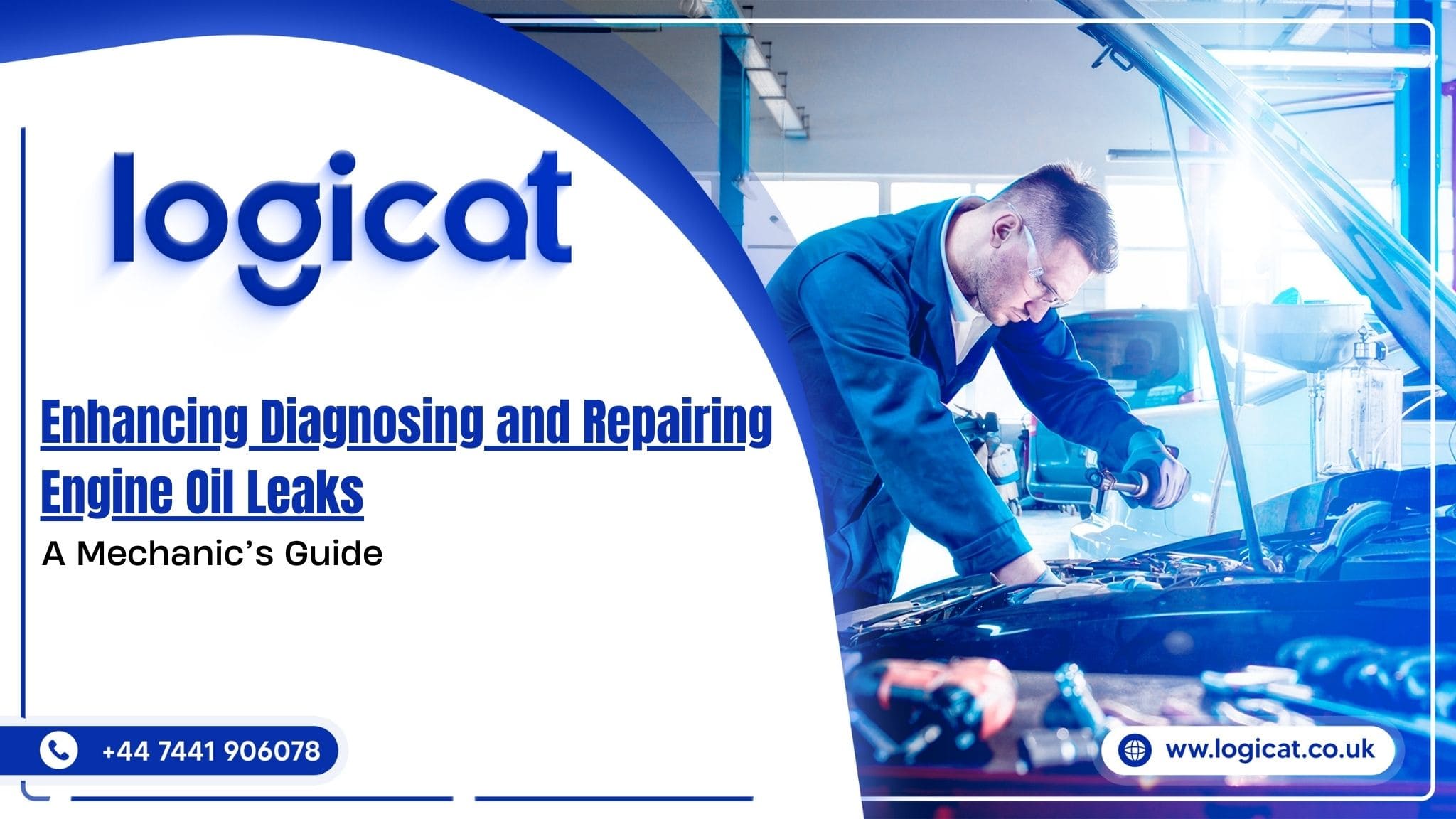Why Early Detection of Oil Leaks is Crucial ?
Oil leaks in engines are one of the most common issues that mechanics face. Left unchecked, these leaks can lead to engine damage, overheating, or even engine failure. Detecting oil leaks early not only helps to maintain engine performance but also prevents costly repairs in the future. In this article, we’ll discuss how to identify and repair oil leaks, and how tools like HaynesPro can make the process quicker and more accurate.
Table of contents
1. What Causes Engine Oil Leaks?
There are several common reasons for oil leaks in a car engine, including:
- Damaged gaskets or seals: Over time, the seals and gaskets in the engine can wear out and begin to leak oil.
- Cracked or worn oil filters: The oil filter can develop cracks or lose its seal, causing oil to escape.
- Loose bolts or fittings: If engine components aren’t tightly secured, oil can leak from the gaps.
- Age of the vehicle: Older vehicles tend to have more wear on parts, which can lead to leaks.
Understanding these causes helps you target the right areas during your inspection.
2. How to Diagnose Oil Leaks
A. Visual Inspection
The first thing to do when checking for an oil leak is to perform a visual inspection of the engine. Look for the following signs:
- Oil spots or puddles: Check under the vehicle and around the engine for any visible signs of oil leakage.
- Oil residue around seals and gaskets: Pay close attention to the gaskets and oil filter. If oil is visible around these areas, it could mean they’re worn out or damaged.
B. Using HaynesPro Diagnostic Tools
With HaynesPro SmartFIX, you can access detailed guides and troubleshooting steps for common oil leak issues. This tool provides specific repair procedures, vehicle model breakdowns, and diagnostic tips, making it easier for mechanics to pinpoint the problem quickly.
C. Fluorescent Leak Detection Dye
If the leak is difficult to locate, using a fluorescent dye is a great option. This dye mixes with the engine oil and can be detected under UV light. It will glow brightly where the oil is leaking, helping you find the exact source.
D. Checking Oil Pressure
Another way to spot a significant oil leak is by checking the oil pressure. If the pressure is low, it’s a sign that there might be a major leak. Using an oil pressure gauge can help confirm this.
3. Repairing Oil Leaks
A. Replacing Gaskets and Oil Filter
Once you’ve located the source of the leak, it’s time to start the repair. The most common fixes are:
- Replacing gaskets: If the gasket around the oil filter or engine is worn out, replace it according to the manufacturer’s instructions in HaynesPro.
- Replacing the oil filter: If the oil filter is damaged, swap it out and ensure the new filter is properly sealed.
- Changing seals: Seals around components like the oil pan or drain plugs often wear out and need replacing.
B. Tightening Loose Parts
Some oil leaks happen simply because parts are not tightly secured. Check the bolts and other components to make sure everything is properly tightened to the manufacturer’s specifications.
C. Repairing Oil Lines or Oil Pan
If the leak is coming from a cracked oil line or pan, you may need to replace those components. Make sure to follow the specific repair instructions for your vehicle model.
D. Using HaynesPro for Accurate Repairs
HaynesPro offers detailed, step-by-step guides for repairing oil leaks. This ensures that you follow the right procedures, avoid mistakes, and complete the repair quickly. The platform also provides valuable diagrams to make the process more straightforward.
4. Post-Repair Testing and Verification
After you’ve fixed the oil leak, it’s important to test your repair and make sure everything is working as expected:
- Oil pressure test: Check the oil pressure once the repair is complete. It should be within the manufacturer’s recommended range.
- Visual inspection: Do a final visual check to ensure there are no new signs of oil leakage.
- Test drive: Take the vehicle for a short drive to ensure everything is functioning correctly and there are no leaks.
Oil leaks may seem like a small issue, but they can quickly become a bigger problem if left untreated. By using tools like HaynesPro and following the best practices for diagnosing and repairing oil leaks, mechanics can save time, reduce mistakes, and keep engines running smoothly. Early detection and repair are key to maintaining engine performance and prolonging the life of the vehicle.
Get Started with HaynesPro Today!
Don’t let oil leaks or other repair issues slow you down. Try HaynesPro for free for 7 days and discover how our detailed repair guides and diagnostic tools can help you work more efficiently and accurately.
Want to see how it works firsthand? Schedule a free demonstration with our experts and experience all the features HaynesPro has to offer.



